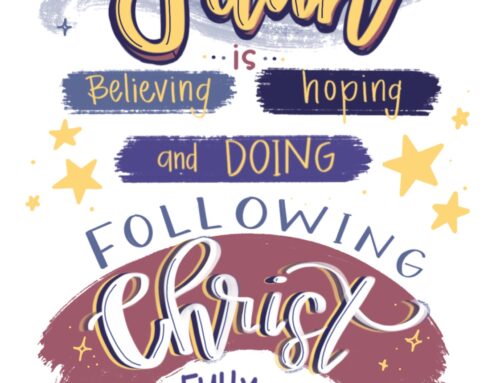The smile of that eight-year-old as she came up out of the water was one to remember. It was the epitome of beaming. My favorite part of serving in the primary was attending those sacred baptism days. As I sat soaking in the joy of the day and watching her come out in that flowing white dress, my mind was suddenly struck with a realization, that something had been missing from my work in preparing the children for baptism. The speaker quoted the fourth article of faith.
We believe that the first principles and ordinances of the Gospel are: first, Faith in the Lord Jesus Christ; second, Repentance; third, Baptism by immersion for the remission of sins; fourth, Laying on of hands for the gift of the Holy Ghost.
For the rest of the talk, there was no more mention of faith or repentance. As with most baptism programs that have talks, it was focused on the ordinance of baptism and the gift of the Holy Ghost, but my mind was somewhere else.
Faith. Repentance.
These are the FIRST principles of the gospel. Everything else needs these principles to come first. I sat in the pew, and asked myself the question, do we teach our children enough about faith and repentance before they make the covenant of baptism? Do they understand enough about these first two principles of the gospel when making this covenant? Or do we just jump to baptism and the Holy Ghost?
That evening I asked my daughter what faith was. She responded with something like, “Believing in Jesus.”
“How do you show faith?” was my follow-up question. She shrugged her shoulders and skipped away.
As I watched my beautiful daughter dive into her own little world of play, I knew she needed to know more. She would be getting baptized in the next year, and I wanted her to be able to enter that covenant with a deeper understanding of these first principles of the gospel. I became almost anxious with a desire to really teach the principle of faith in a tangible way to my own children, and to the primary children I was serving at the time.
Faith captivated my mind. How do you define it? How could I possibly bridge a child’s understanding from just simple belief to the greater essence that makes up faith? How could I show all children that faith was not just belief, but required action? Surly if they were old enough to make the choice to be baptized they must be old enough to understand faith in a more meaningful way.
Years before, as a missionary in Kansas, I had an investigator who had opened my mind to a deeper definition of faith. When we first started teaching Jason he refused to read the Book of Mormon, insisting on reading our lesson manuals first. He told me this is how he would see how our church implements the beliefs found in our scriptures. One night he had stayed up all night reading the entire Gospel Principles manual. When we showed up to teach him the next day, Jason was excited to tell us what he had learned in his study. On the whiteboard, he scribbled out
Faith = trust + obedience + action
“From putting together the teachings in your manual, I think this is your church’s definition of faith. I like this definition.”
I remember sitting there a little bit speechless and finally saying “Yeah. That is a pretty good definition of what faith means to us. It is more than belief. True faith inspires obedience and actions.” We opened up the bible dictionary and read about faith together. It was a very memorable lesson from my mission.
As I sat pondering how to teach faith to the children, my mind wandered back to that missionary lesson so many years before, and Jason’s definition. It had been years since I had read about faith in the bible dictionary, so I decided to dive back in. As I read, the following line really stood out to me.
…Faith in Jesus Christ is the first principle of the gospel and is more than belief since true faith always moves its possessor to some kind of physical and mental action;
And that was my answer. I felt it in my mind and heart. I needed to teach the children the physical and mental actions of faith.
Believing
Hoping
Doing
Trusting
Relying
Following
Acknowledging
Choosing
As with math, dancing, tennis, etc., action always helps build understanding in whatever we are trying to learn. The same comes with faith. I knew I needed to show my children there are tangible actions we can take to go along with our beliefs. That is what faith really is. Putting an action with our belief will bridge the gap to help us all understand and build faith.
I worked to point out the actions of our faith, and I saw my family’s understanding begin to expand.
Speaking the words of a prayer is showing faith that we believe someone is listening.
Listening to General Conference is showing faith that we believe the prophets will speak messages meant for us.
Asking God for forgiveness is showing faith in the Savior’s atonement.
We began to see our actions of faith daily.
Out of all this study and application, the idea for my picture book Faith Is was born. I hope it will spark a deeper understanding of faith in all who read it, especially those sweet children preparing to make that eternally significant covenant of baptism. The beautiful thing about teaching about faith is that my faith has also grown in the process. It is one eternal round. Actions build faith, and faith inspires action.

Leave A Comment